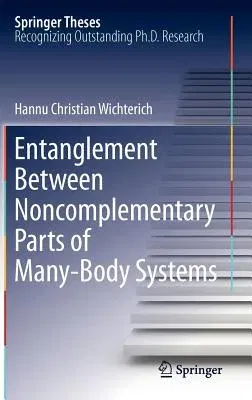Hannu Christian Wichterich
(Author)Entanglement Between Noncomplementary Parts of Many-Body SystemsHardcover, 19 May 2011

Qty
1
Turbo
Ships in 2 - 3 days
In Stock
Free Delivery
Cash on Delivery
15 Days
Free Returns
Secure Checkout

Part of Series
Springer Theses
Part of Series
Springer Theses: Recognizing Outstanding Ph.D. Research
Print Length
116 pages
Language
English
Publisher
Springer
Date Published
19 May 2011
ISBN-10
3642193412
ISBN-13
9783642193415
Description
Product Details
Author:
Book Format:
Hardcover
Country of Origin:
NL
Date Published:
19 May 2011
Dimensions:
23.39 x
15.6 x
0.97 cm
ISBN-10:
3642193412
ISBN-13:
9783642193415
Language:
English
Location:
Berlin, Heidelberg
Pages:
116
Publisher:
Weight:
358.34 gm